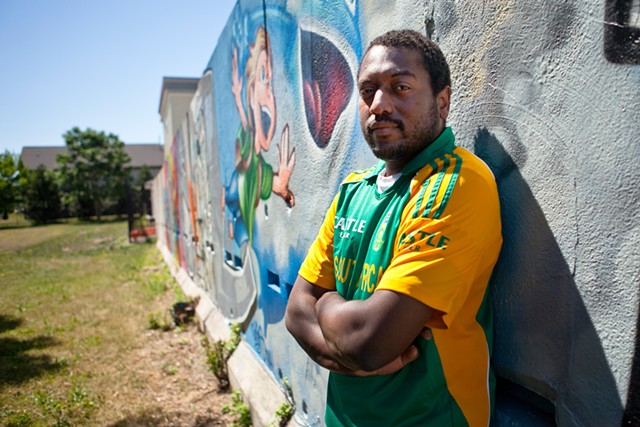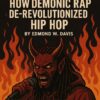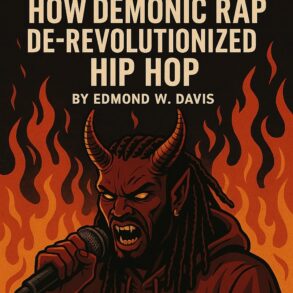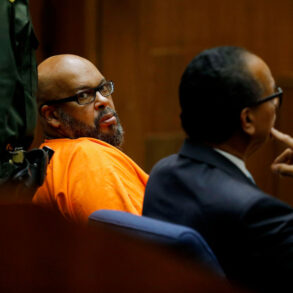
- PHOTO BY RAFAEL RODRIGUEZ
- “One of the most miraculous things about hip-hop is that it grew out of seemingly infertile ground,” said Dr. Ian Wilson, who founded WallTherapy.
This year, Dr. Ian Wilson, a Rochester-based independent physician specializing in interventional radiology and founder of the local street art festival WallTherapy, is celebrating his 50th birthday. But there’s another half- century commemoration on his mind in 2023.
Hip-hop — the cultural phenomenon encapsulating rap music, turntablism, breakdancing, graffiti, beatboxing and fashion — also turned 50. “I’ve grown up within hip-hop culture,” Wilson said. “I don’t remember a time when I wasn’t aware of hip-hop culture in various forms, whether it was in the ’70s at block parties, my brother as neighborhood DJ, (or) the graffiti that was running on the trains in New York City.”
Born in the Brownsville neighborhood of Brooklyn, Wilson grew up in nearby East New York, where violence was prevalent and neighborhood gangs ran rampant. He recalled today’s sidewalk coffee shop neighborhoods as difficult places to live back then.

- FILE PHOTO
- South African artist Faith47 paints “Rhapsody” on the Lofts at Michaels-Stern on Pleasant Street in 2021.
“Bedford-Stuyvesant, Bushwick, Williamsburg — those were rough areas, man,” he said. “If you didn’t know someone in those areas and you got off the subway train, and someone asked you where you were going or who you knew, then you might get robbed, you might get beat up, just for kicks, you know? That’s the Brooklyn that I grew up in.”
Wilson said hip-hop came out of a natural need for self-expression. It was a release valve, a way to make sense of life, despite the fact that all around was proof of constriction, disillusionment, and fear. The multifaceted art form was a survival mechanism.
“One of the most miraculous things about hip-hop is that it grew out of seemingly infertile ground,” he said. “What was fertile was the diversity of people who made up the soil. So while the conditions weren’t favorable, there were elements still present in that environment that made something like hip-hop possible — positivity, hope for a better future, the need to celebrate what you had even if you didn’t have much.”
From b-boys using cardboard boxes to hone their dance form to graffiti writers taking old spray nozzles from household products and putting them on spray paint cans, repurposing leftover, disregarded or undervalued items — musical or mundane — and creating new art subsets is at the heart of hip-hop’s magic.
“I think hip-hop’s calling card is making something out of nothing,” said Bakari Kitwana, who wrote the book “The Hip-Hop Generation: Young Blacks and the Crisis in African American Culture.” He is also the 2023-2024 Distinguished Visit Scholar in Africana and American Studies at the University at Buffalo and a University of Rochester alumnus.
Kitwana sees hip-hop as a generational phenomenon, and “defined the hip-hop generation as young Blacks born between the years 1965 and 1984.” The younger end of that generation is now approaching their 40s, but hip-hop appeals to people across age brackets and speaks to each in distinctive ways.

- FILE PHOTO
- WallTherapy founder Dr. Ian Wilson at the Troup Street mural where the seeds of the annual festival were planted in 2011.
Hip-hop was a way for marginalized people to claim their own identity and assert themselves in a positive way. Wilson said the socioeconomic environment from which hip-hop sprang makes it truly miraculous.
“Usually when people are in tough situations, they don’t create something that is beautiful while they’re in those circumstances — while they’re just trying to survive, while they’re trying to stay safe, while they’re trying to feed their families,” he said. “In the hierarchy of needs, the base of the pyramid has to be satisfied first before you can build anything.”
Wilson credits music figures like Grand Wizzard Theodore and Grandmaster Flash as game-changers in how people listen to music, from the use of loops to the significance of instrumental breaks. Visually, the Rochester doctor and founder of the local mural project WallTherapy praises innovators such as Dondi, Blade, and Zephyr for deconstructing letter forms and reimagining them in a different way that later gave rise to subsequent street art and mural movements.

- PHOTO PROVIDED
- A mural by Rochester artist Brittany Williams for WallTherapy in 2015.
WallTherapy, which originated as Visual Intervention in 2011, would never have existed in Rochester without the graffiti art of New York City. “The medium of leaving a message on a surface that would just be a constant presence, yes, that idea came from my experience in Brooklyn with graffiti, and the handball courts that were painted in the neighborhood as well,” Wilson said. “They were constant masterpieces of art that were just always there.”
So, he figured, why not do the same?
“If you want to communicate a message in a way that’s enduring, use the walls the way that I remember them being used in my early days,” he said.
For Wilson, hip-hop culture’s greatest enduring gift is its aspirational identity.
“There’s a saying in hip-hop: ‘It ain’t where you’re from, it’s where you’re at,’” he said. “Hopefully, where you end up in life is far from where you started, and hopefully for the better. That’s something that you’re reminded of when you think about the originators of this culture. They believed they had something to give, and they had the courage to bring it forth.”
Daniel J. Kushner is an arts writer at CITY. He can be reached at [email protected].
This post was originally published on this site be sure to check out more of their content.








